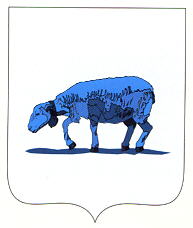Pittefaux: Difference between revisions
Jump to navigation
Jump to search
Knorrepoes (talk | contribs) m (Text replace - "Armorial de France, Armoires, Blason" to "Armorial de France, Armoiries, Blason, Héraldique, Armes") |
Knorrepoes (talk | contribs) m (Text replace - "[[Literature" to "{{media}} [[Literature") |
||
| Line 11: | Line 11: | ||
====Origin/meaning==== | ====Origin/meaning==== | ||
The local council applied in 1996 for the above arms, showing a blue ewe. The ewe was derived from a part of the famous tapestry from the chapel of Souverain-Moulin. The tapestry is an important tourist spot in the municipality. At the same time the ewe is a reference to the arms of the Lubersac family, who played a mayor role in the local history. | The local council applied in 1996 for the above arms, showing a blue ewe. The ewe was derived from a part of the famous tapestry from the chapel of Souverain-Moulin. The tapestry is an important tourist spot in the municipality. At the same time the ewe is a reference to the arms of the Lubersac family, who played a mayor role in the local history. | ||
{{media}} | |||
[[Literature]] : Bréemersch et al., 1996 | [[Literature]] : Bréemersch et al., 1996 | ||
Revision as of 03:33, 9 July 2014
| Heraldry of the World Civic heraldry of France - Armorial de France |
PITTEFAUX
Département : Pas-de-Calais
Origin/meaning
The local council applied in 1996 for the above arms, showing a blue ewe. The ewe was derived from a part of the famous tapestry from the chapel of Souverain-Moulin. The tapestry is an important tourist spot in the municipality. At the same time the ewe is a reference to the arms of the Lubersac family, who played a mayor role in the local history.
Contact and Support
Partners:
Your logo here ?
Contact us
© since 1995, Heraldry of the World, Ralf Hartemink 
Index of the site
Literature : Bréemersch et al., 1996











